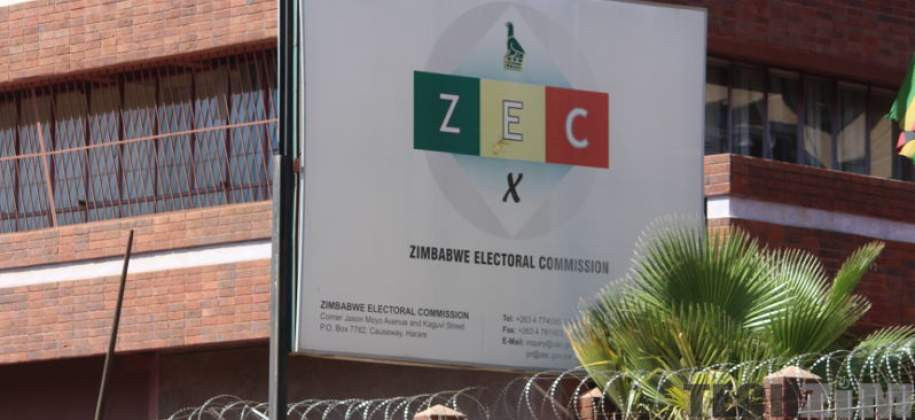
Last week we published this article with defects. We unreservedly apologise for any inconveniences caused.
ZIMBABWE’S central bank launched a new gold-backed structured currency, the Zim Gold (ZiG), following the severely devalued Zimbabwe dollar, which traded as bond notes, and was pegged at US$1:ZW$30 000 interbank rate by the time the ZiG was launched.
Annual inflation had reached over 1 000% and market trading including payments of public services, taxes, and fuel are predominantly pegged at USD prices.
When the preceding bond notes were introduced in May 2016, it was guaranteed by a US$200 million bond facility from Afreximbank.
Although this currency faced much resistance from the public, the government was adamant to inject the notes into the economy and it subsequently became a legal tender in November 2016 pegged at US$1: bond note 1.
It is against the introduction process that citizens lost confidence in the country’s financial system and market dictated use of USD to safeguard investment and profits. As anticipated, from 2016 to date, there has been an erosion of confidence in the financial system and the investments market, inflation sky-rocketed, and the parallel market thrived.
Also, from 2016 to date, formal employment has declined while informal employment has drastically increased. According to statistics, women in the informal sector are regarded as employed and this dilutes the recorded official effects of economic activities on women’s employment rates as quantity of income earners is prioritised over the quality of business and labour women find themselves in.
This new structured currency has not gone without questions from the public, particularly whether the central bank has sufficient gold reserves to back the currency and how the ZiG will remain stable in the midst of volatile gold prices.
- MIHR petitions govt on Lubimbi relocations
- ‘Timely IMF boost saved Zim’
- ‘Inflation could shoot to 700% by April next year’
- In Full: Twelfth post-cabinet press briefing: May 10, 2022
Keep Reading
Again, structure of the currency has not addressed the gaps in citizen’s confidence in this financial solution. While it is too early to proffer a comprehensive prognosis on the effect of this new currency on the country’s economic stability, circulation, education, and information loopholes of the Zim Gold seem to have already negatively influenced citizens especially women.
For example, public transport, which costs US$0,50 or ZWL equivalent has gone up to US$1 due to the absence of change following the abrupt cease of bond notes usage.
Also, delayed circulation of the Zim Gold forces additional purchase of unnecessary items to cover for change. For the average poor citizen, this is regarded as a price hike and negatively affects disposable income.
Women’s economic participation
Women’s labour force participation has increased slightly over the years where about 35% are in the labour force compared to 32,4% in 2022 but far behind the 54,6% of men’s participation.
However, due to the anticipated 2% decline in economic growth according to the 2024 national budget, the statistics of improved women’s labour force may also decline as a result of reduced formal employment and increased informality.
For women-owned businesses, the precarity of the influence of the Zim Gold on local and regional/international trade is likely to affect women’s participation in economic activities, monetary and non- monetary cost of doing business vis-a-vis other socio-cultural financial and non-financial obligations, investment programmes and portfolios, imports and exports, as well as creation of employment opportunities.
According to the country’s National Development Strategy 1 goals of inclusive growth and gender mainstreaming, a decline in economic growth implies that decent work and formal employment rates will remain stifled while women’s access to business capital stays limited.
Currently, women, particularly in the informal sector are exposed to poor labour standards, poor hygiene and sanitation conditions, and low remuneration.
Coupled with increased tax obligations, unaffordable shop licences and unsustainable business operating expenses, achieving sustainable development goals 5 - gender equality, 8 - Decent work and economic growth, and 10 - Reduced inequalities, will require more deliberate gender mainstreaming of economic policies.
Women’s informal livelihood
Vending is the most predominant form of trade in the informal sector and is providing livelihoods for millions of Zimbabwean citizens. Around 70% of street vendors are women who, for many years, have suffered goods and cash losses from police raids as they struggle to provide for their families with basics.
In addition, the nature of this trade requires small denominations of money and change. The process of wiping out the ZWL and introducing the Zim Gold has left most vendors short of change and intensified US$0,50 equivalent, US$1, and US$5 scarcities. This affects vendors’ daily sales and overall ease of doing business.
The Reserve Bank of Zimbabwe governor John Mushayavanhu has also promised to intensify punitive measures on money changers as they propel the parallel market.
However, the same parallel market has been advantageous to the vendors as it provides favourable exchange rates. With the recent adoption of the market determined exchange rate system as stipulated in the 2024 Monetary Policy Statement, citizens’ expectation is that the total cost of exchange through official banking channels should be favourable, especially having addressed issues of high bank charges, availability of change and smaller USD denominations, as well as acceptance of soiled notes.
Lending schemes
The average woman, who seeks to source capital to start a project or grow an existing one still faces challenges of accessing loans on favourable terms.
Most women do not have collateral, valid bank statements, and performance records among other requirements to access loans. As a result, informal community pooled funds have become a rampant capital source for most businesswomen while “under the mattresses” in USD cash is the most popular form of savings.
This secludes the role of financial services in many investment and savings activities.
Despite safety concerns of current cash savings and storage preferences, the benefit of not incurring bank charges or interest on loans far outweighs the risk of hoarding cash at home.
Over the years, fluctuating and increasing inflation rates have discouraged banks, micro finance institutions, and other lending schemes form lending in the local currency. The introduction of the Zim Gold could potentially face the same predicament of not being used in the financial services sector, particularly, lending schemes.
This causes a reduction in its women’s empowerment capability. Pro-gender policies and governance, which encourage stability and sustainability of the ZiG, are required in order to allow women to earn, save, and trade their income in the local currency.
Information dissemination
Following the introduction of the new currency, there have been information gaps such as such as its competitiveness against other currencies in the market and its stability against the experience of the phased out Zimbabwe dollar.
This information is necessary, particularly for women, who have less access to real time information regarding economic activities than men. As such, deliberate initiatives ought to be implemented to debug the uncertainty behind the influence of the Zim Gold on gender equality, empowerment, and justice. There is need for relevant ministries to promote education, training, and information programmes on the new currency, particularly for rural women.
- Jaravaza is an independent policy analyst. These weekly New Horizon articles, published in the Zimbabwe Independent, are coordinated by Lovemore Kadenge, an independent consultant, managing consultant of Zawale Consultants (Pvt) Ltd, past president of the Zimbabwe Economics Society and past president of the Chartered Governance & Accountancy Institute in Zimbabwe (CGI Zimbabwe). — [email protected] or mobile: +263 772 382 852.











